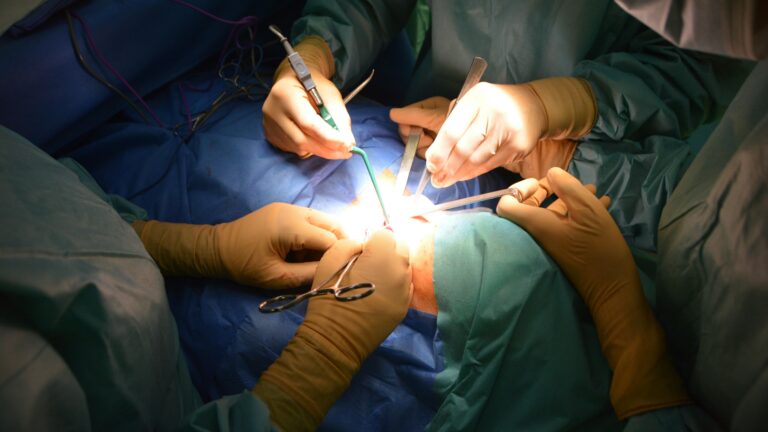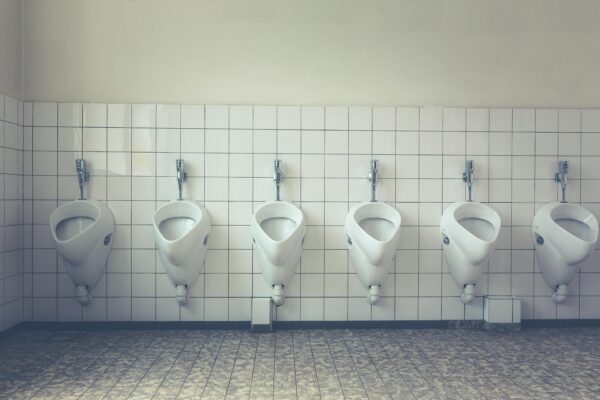When it comes to prostate health, one of the most discussed medical procedures is the prostatectomy. Whether you’re facing a diagnosis of prostate cancer, benign prostatic hyperplasia (BPH), or another prostate-related condition, understanding what a prostatectomy entails can help you make informed decisions about your health. In this article, we’ll dive deep into the types of prostatectomy, what to expect before, during, and after the procedure, and how to navigate recovery like a pro. Let’s get into it.
- What Is a Prostatectomy?
- Types of Prostatectomy: Which One Is Right for You?
- What to Expect Before a Prostatectomy
- The Prostatectomy Procedure: Step by Step
- Recovery After Prostatectomy: What You Need to Know
- Potential Risks and Complications of Prostatectomy
- Life After Prostatectomy: What Changes Can You Expect?
- Tips for a Smooth Recovery
- Final Thoughts: Taking Control of Your Prostate Health
- FAQs: Prostatectomy and Recovery
- Question: What is a prostatectomy, and why is it performed?
- Question: What are the different types of prostatectomy?
- Question: How long does it take to recover from a prostatectomy?
- Question: What are the potential side effects of a prostatectomy?
- Question: Will I need a catheter after a prostatectomy?
- Question: Can I still have children after a prostatectomy?
- Question: How can I prepare for a prostatectomy?
- Question: What lifestyle changes should I make after a prostatectomy?
- Question: How effective is a prostatectomy in treating prostate cancer?
- Question: What should I do if I experience complications after surgery?
What Is a Prostatectomy?
A prostatectomy is a surgical procedure that involves the removal of part or all of the prostate gland. The prostate is a small, walnut-sized gland located below the bladder and in front of the rectum. It plays a crucial role in the male reproductive system, producing fluid that nourishes and transports sperm.
There are several reasons why a prostatectomy might be recommended, including:
- Prostate cancer: The most common reason for a prostatectomy.
- Benign prostatic hyperplasia (BPH): An enlarged prostate that causes urinary issues.
- Severe prostate infections or abscesses: Rare but possible reasons for surgery.
Types of Prostatectomy: Which One Is Right for You?
Not all prostatectomies are the same. The type of procedure you undergo will depend on your specific condition, overall health, and the surgeon’s recommendation. Here’s a breakdown of the most common types:
1. Radical Prostatectomy
This is the gold standard for treating localized prostate cancer. During a radical prostatectomy, the entire prostate gland is removed, along with some surrounding tissue and lymph nodes. There are two main approaches:
- Open Radical Prostatectomy: A traditional surgical approach where the surgeon makes an incision in the lower abdomen or perineum.
- Minimally Invasive Radical Prostatectomy: Includes laparoscopic and robot-assisted techniques, which involve smaller incisions and faster recovery times.
2. Simple Prostatectomy
This procedure is typically used to treat BPH rather than cancer. In a simple prostatectomy, only the inner part of the prostate gland is removed, leaving the outer portion intact. This helps relieve urinary symptoms without completely removing the gland.
3. Radical Cystoprostatectomy
In cases where bladder cancer has spread to the prostate, a radical cystoprostatectomy may be performed. This involves removing the bladder, prostate, and surrounding tissues.
What to Expect Before a Prostatectomy
Preparation is key to a successful prostatectomy. Here’s what you can expect in the days and weeks leading up to your surgery:
- Medical Evaluation: Your doctor will conduct a thorough evaluation, including blood tests, imaging studies, and possibly a biopsy to confirm your diagnosis.
- Lifestyle Adjustments: You may be advised to stop smoking, avoid certain medications (like blood thinners), and maintain a healthy diet to optimize your recovery.
- Pre-Surgery Instructions: You’ll likely be asked to fast for several hours before the procedure and may need to take a bowel prep to clear your system.
The Prostatectomy Procedure: Step by Step
Let’s walk through what happens during a typical prostatectomy:
- Anesthesia: You’ll be given general anesthesia or spinal anesthesia to ensure you’re comfortable and pain-free throughout the procedure.
- Incision: Depending on the type of prostatectomy, the surgeon will make one or more small incisions in the abdomen or perineum.
- Removal of the Prostate: The prostate gland is carefully detached from surrounding tissues and removed. In cases of cancer, nearby lymph nodes may also be removed for further testing.
- Reconstruction: If necessary, the surgeon will reconstruct the urinary tract to ensure proper function after surgery.
- Closure: The incisions are closed with sutures or surgical glue, and a catheter is placed to help drain urine during the initial recovery period.
Recovery After Prostatectomy: What You Need to Know
Recovery from a prostatectomy can take anywhere from a few weeks to several months, depending on the type of surgery and your overall health. Here’s what you can expect:
Immediate Post-Surgery Care
- Hospital Stay: Most men stay in the hospital for 1-3 days after surgery.
- Catheter Use: You’ll likely have a catheter for 1-2 weeks to help your bladder heal.
- Pain Management: Your doctor will prescribe pain medications to keep you comfortable during the initial recovery phase.
Long-Term Recovery
- Physical Activity: Avoid heavy lifting and strenuous activities for at least 4-6 weeks. Light walking is encouraged to promote circulation and prevent blood clots.
- Pelvic Floor Exercises: Kegel exercises can help strengthen your pelvic floor muscles and improve urinary control.
- Follow-Up Appointments: Regular check-ups with your doctor are essential to monitor your recovery and address any complications.
Potential Risks and Complications of Prostatectomy
Like any surgery, a prostatectomy comes with potential risks. These may include:
- Urinary Incontinence: Difficulty controlling urination, which is usually temporary but can persist in some cases.
- Erectile Dysfunction: Some men experience changes in sexual function after surgery, though this often improves over time.
- Infection: As with any surgery, there’s a risk of infection at the incision site or in the urinary tract.
- Bleeding: Excessive bleeding during or after surgery is rare but possible.
Life After Prostatectomy: What Changes Can You Expect?
While a prostatectomy can be life-saving, it’s important to be prepared for the changes that may come with it. Here’s what you might experience:
- Urinary Function: It may take some time to regain full control over your bladder. Be patient and follow your doctor’s advice.
- Sexual Health: If you experience erectile dysfunction, there are treatments available, including medications, vacuum devices, and penile implants.
- Emotional Well-Being: It’s normal to feel a range of emotions after surgery. Don’t hesitate to seek support from loved ones or a mental health professional.
Tips for a Smooth Recovery
To make your recovery as smooth as possible, keep these tips in mind:
- Stay Hydrated: Drink plenty of water to flush out toxins and support healing.
- Eat a Balanced Diet: Focus on foods rich in fiber, vitamins, and minerals to promote recovery.
- Follow Your Doctor’s Orders: Take medications as prescribed and attend all follow-up appointments.
- Be Patient: Recovery takes time, so don’t rush the process.
Final Thoughts: Taking Control of Your Prostate Health
A prostatectomy is a significant procedure, but it can be a life-changing step toward better health. By understanding what to expect and taking an active role in your recovery, you can navigate this journey with confidence. Remember, you’re not alone—millions of men have undergone this surgery and gone on to live full, healthy lives. So, take a deep breath, trust the process, and know that you’ve got this.
Sources, Studies, and Links
To ensure the accuracy and reliability of the information provided in this article, we’ve compiled a list of reputable sources, studies, and links for further reading. These resources offer in-depth insights into prostatectomy, its types, procedures, recovery, and long-term outcomes.
1. Medical Journals and Studies
- National Cancer Institute (NCI): Prostate Cancer Treatment (PDQ®)
A comprehensive guide on prostate cancer treatments, including radical prostatectomy, with data on outcomes and survival rates. - American Urological Association (AUA): Clinical Guidelines on Prostatectomy
Evidence-based guidelines for prostatectomy, including patient selection, surgical techniques, and post-operative care. - The New England Journal of Medicine (NEJM): Long-Term Outcomes of Radical Prostatectomy
A landmark study comparing the long-term outcomes of radical prostatectomy versus watchful waiting for localized prostate cancer. - European Urology: Robot-Assisted vs. Open Radical Prostatectomy
A comparative study on the efficacy and safety of robot-assisted versus open radical prostatectomy.
2. Health Organizations and Resources
- Mayo Clinic: Prostatectomy Overview
A detailed overview of prostatectomy, including preparation, risks, and recovery. - Cleveland Clinic: Prostatectomy: What to Expect
A patient-friendly guide to understanding prostatectomy, with tips for pre- and post-surgery care. - WebMD: Prostatectomy Surgery
An easy-to-read resource on the types of prostatectomy and what to expect during recovery. - American Cancer Society (ACS): Surgery for Prostate Cancer
A trusted resource on surgical options for prostate cancer, including risks and benefits.
3. Patient Support and Advocacy Groups
- Prostate Cancer Foundation (PCF): Understanding Prostatectomy
A patient-focused resource with information on prostatectomy and its role in prostate cancer treatment. - ZERO – The End of Prostate Cancer: Prostatectomy Recovery Tips
Practical advice for men recovering from prostatectomy, including managing side effects like incontinence and erectile dysfunction. - Us TOO International: Prostatectomy Support Groups
A network of support groups for men and their families affected by prostate cancer, including those who have undergone prostatectomy.
4. Surgical Techniques and Innovations
- PubMed Central (PMC): Advances in Minimally Invasive Prostatectomy
A review of the latest advancements in laparoscopic and robot-assisted prostatectomy techniques. - Urology Care Foundation: Robotic Prostatectomy
An overview of robotic-assisted prostatectomy, including benefits and potential risks.
5. Recovery and Rehabilitation
- Harvard Health Publishing: Life After Prostatectomy
Tips for managing urinary and sexual health after prostatectomy. - National Institute of Diabetes and Digestive and Kidney Diseases (NIDDK): Pelvic Floor Exercises for Men
A guide to pelvic floor exercises, which can help improve urinary control after prostatectomy.
6. Additional Reading
- MedlinePlus: Prostatectomy
A concise overview of prostatectomy from the U.S. National Library of Medicine. - Johns Hopkins Medicine: Prostatectomy FAQs
Frequently asked questions about prostatectomy, answered by leading urologists.
By exploring these sources, you can gain a deeper understanding of prostatectomy and make informed decisions about your health. Always consult with your healthcare provider to discuss your specific condition and treatment options.
FAQs: Prostatectomy and Recovery
Question: What is a prostatectomy, and why is it performed?
A prostatectomy is a surgical procedure to remove part or all of the prostate gland. It is commonly performed to treat prostate cancer, benign prostatic hyperplasia (BPH), or severe prostate infections. The goal is to alleviate symptoms, prevent cancer spread, or improve urinary function.
Question: What are the different types of prostatectomy?
There are three main types of prostatectomy: radical prostatectomy (removal of the entire prostate for cancer treatment), simple prostatectomy (removal of part of the prostate for BPH), and radical cystoprostatectomy (removal of the prostate and bladder for advanced bladder cancer). Each type is tailored to the patient’s specific condition.
Question: How long does it take to recover from a prostatectomy?
Recovery time varies depending on the type of prostatectomy and the patient’s overall health. Most men can return to light activities within 2-4 weeks, but full recovery, including regaining urinary control and sexual function, may take several months. Follow your doctor’s advice for a smooth recovery.
Question: What are the potential side effects of a prostatectomy?
Common side effects include urinary incontinence (temporary or permanent), erectile dysfunction, and infection. Most side effects improve over time, and treatments like pelvic floor exercises, medications, or therapy can help manage them.
Question: Will I need a catheter after a prostatectomy?
Yes, a catheter is typically placed after surgery to help drain urine while your bladder heals. Most men use the catheter for 1-2 weeks, but your doctor will provide specific instructions based on your recovery progress.
Question: Can I still have children after a prostatectomy?
A prostatectomy may affect fertility because the prostate gland plays a role in semen production. If having children is important to you, discuss options like sperm banking with your doctor before the procedure.
Question: How can I prepare for a prostatectomy?
Preparation includes a thorough medical evaluation, lifestyle adjustments (like quitting smoking), and following pre-surgery instructions (such as fasting). Your doctor will provide a detailed plan to ensure you’re ready for the procedure.
Question: What lifestyle changes should I make after a prostatectomy?
After surgery, focus on a healthy diet, regular exercise, and pelvic floor exercises to aid recovery. Avoid heavy lifting and strenuous activities for at least 4-6 weeks, and stay hydrated to support healing.
Question: How effective is a prostatectomy in treating prostate cancer?
A radical prostatectomy is highly effective for treating localized prostate cancer, with studies showing high survival rates and reduced risk of cancer recurrence. However, the effectiveness depends on factors like cancer stage, patient health, and surgical technique.
Question: What should I do if I experience complications after surgery?
If you experience complications like severe pain, excessive bleeding, or signs of infection, contact your doctor immediately. Regular follow-up appointments are crucial to monitor your recovery and address any issues promptly.
Disclaimer: This article is for informational purposes only and should not be considered medical advice. Always consult with a qualified healthcare professional before making decisions about your health.





